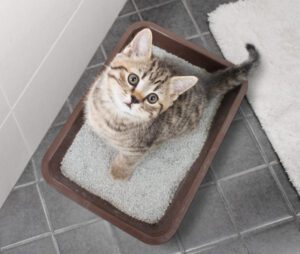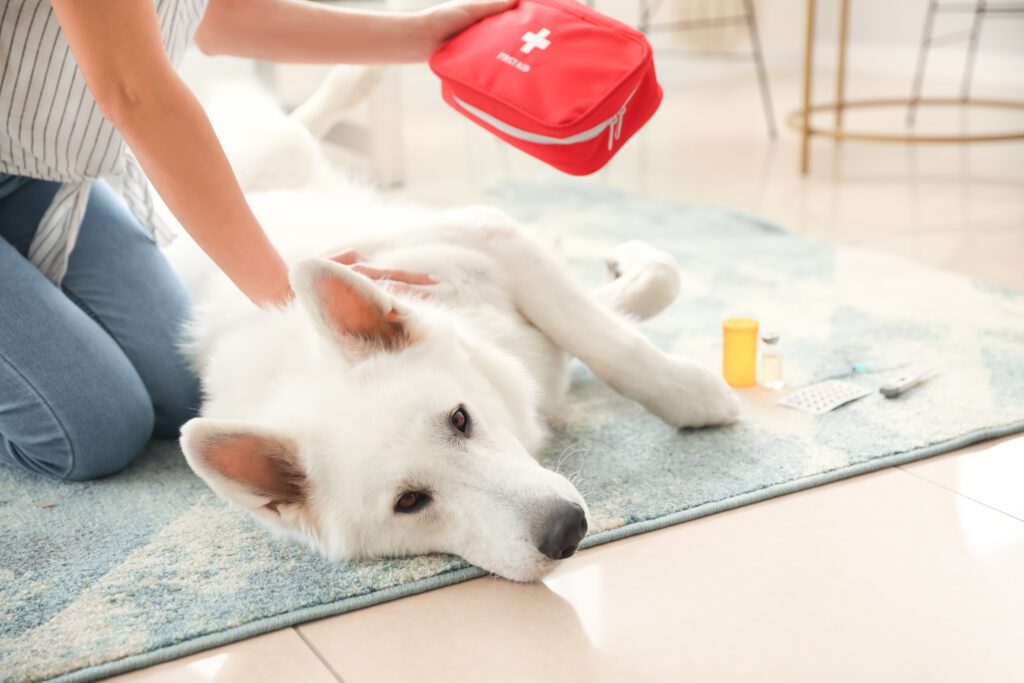My Cat Isn’t Using the Litterbox – Should I Be Concerned?
Understanding the preferences and needs of your feline companion is a crucial part of being a responsible cat owner. One such need is the provision of a clean and comfortable litterbox for them to use. However, there may come a time when your cat abruptly stops using their litterbox, and this could be a sign of various underlying issues.
Often times, cats will stop using the litterbox because it is dirty, it has been moved, or you have changed the brand or type of litter. other times, your cat may have a physical or emotional health issue going on that is stopping them from using the litterbox.

This blog post aims to explore potential reasons behind this behavior and suggests practical solutions to guide your cat back to its regular routine.
6 Reasons Why Your Cat Isn’t Using the Litterbox
There may be a variety of factors why your cat has stopped using the litterbox. We’ve explored 6 potential reasons below.
1) Health-Related Concerns
First and foremost, if your cat suddenly stops using their litterbox, it’s essential to rule out medical issues. Certain conditions such as urinary tract infections, kidney stones, bladder inflammation, or arthritis could make urination painful for your feline friend. These conditions might deter them from using their litterbox. Thus, any changes in their litterbox behavior warrant an immediate visit to the vet.
2) The Litterbox is Dirty
Cats are well-known for their cleanliness, and a dirty litterbox might not meet their high standards. Regularly refreshing the litter and cleaning the box can prevent your cat from avoiding it. When cleaning, opt for mild soap and water instead of harsh chemicals, as cats may be repelled by strong smells.
3) You Changed Litter Brands
Cats can be quite particular about the type of litter they use. A change in the brand or type of litter could lead to a disruption in your cat’s routine. If you’ve recently switched to a new type of litter and your cat has started avoiding the litterbox, it could be worth switching back or trying different types until you find one your cat is comfortable with.
4) Size and Location of the Litterbox
The accessibility and comfort of the litterbox can also impact your cat’s willingness to use it. The litterbox should be large enough for your cat to move around comfortably and should be placed in a quiet and convenient location. If the box is too small or is placed in a high-traffic area, your cat might feel uncomfortable and start avoiding it.
5) Your Cat is Stressed or Anxious
Cats, like humans, can be influenced by their emotional state. Stress and anxiety due to changes in their environment, such as moving to a new home, introducing new pets or family members, or significant changes in furniture arrangement, can disrupt their routine and make them feel insecure. Maintaining a consistent environment and providing a calm, secure space can help reduce anxiety levels and encourage your cat to use their litterbox.
6) Territorial Issues
In multi-cat households, territorial disputes could lead to one or more cats avoiding the litterbox. It’s advisable to have more litterboxes than the number of cats in the house to prevent such disputes. These boxes should be strategically placed so each cat can access one without crossing another cat’s territory.
Addressing the Issue: Steps to Take if Your Cat Stops Using the Litterbox
If your cat has stopped using the litterbox, try taking these steps. Remember, it is very important to be patient with your cat during this process.
Seek Professional Help
If you suspect that a health issue is causing your cat’s litterbox aversion, consulting with a vet should be your first course of action. They can diagnose any underlying health conditions and suggest appropriate treatments.
Maintain Litterbox Hygiene
One of the easiest ways to encourage your cat to use their litterbox is by keeping it clean. This involves scooping the litterbox daily, changing the litter every few weeks, and cleaning the box itself with mild soap and water regularly.
Experiment with Litter Types
If your cat is selective about the type of litter they use, it could be beneficial to offer them a variety of options to choose from. Opt for unscented, low-dust varieties, as strong scents or dusty litter could deter your feline friend.
Optimize Litterbox Size and Placement
A litterbox should offer enough space for your cat to move around comfortably. Additionally, its location should be easily accessible and situated in a quiet, low-traffic area of your home. If your home spans multiple floors, consider installing a litterbox on each level to ensure easy access for your cat.
Identify and Reduce Stressors
If your cat is suffering from stress or anxiety, identifying and eliminating the source can be beneficial. This might involve maintaining a regular schedule, providing a safe space for your cat to retreat to, or engaging them in regular play sessions to build their confidence.
Address Territorial Issues
If you have multiple cats, ensuring there are enough litterboxes is crucial to avoid territorial disputes. Ideally, each cat should have its own litterbox, plus one extra. Position these boxes strategically around your home to allow each cat easy access without having to cross another cat’s territory.
Reinforce Litterbox Training
Whether you’re training a new kitten or retraining an older cat, patience and consistency are key. Praise your cat when they use the litterbox correctly and gently guide them back to the box if they have accidents elsewhere.
Conclusion
Experiencing your cat avoiding their litterbox can be a cause for concern. By understanding the possible causes, you can take appropriate actions to address the issue. Whether it’s a health concern, a cleanliness issue, a preference for a certain type of litter, or an emotional trigger, each can be addressed with time and patience. Always consult your veterinarian if you suspect a medical issue may be behind your cat’s behavior.
If you need to see a vet in the Clifton Park, NY region, Cornerstone Veterinary Hospital of Clifton Park is here for you and your pet. Give us a call today at (518) 383-6254 or visit us online to make an appointment!
Recent Posts
Pet First Aid: Essential Supplies for Your Pet Emergency Kit
Pet First Aid: Essential Supplies for Your Pet Emergency Kit Every pet parent wants to keep their…
Benefits of Spaying or Neutering a Cat
Benefits of Spaying or Neutering a Cat Deciding to spay or neuter your cat is a responsible…
Why Does My Cat Get Eye Boogers Everyday?
Why Does My Cat Get Eye Boogers Everyday? Cats are known for their meticulous grooming habits, but…
About Us
Originally opened as Animal Care Hospital by Dr. Mark Johnston in 1989, the hospital became Cornerstone Veterinary Hospital in 2015 when it was purchased by Drs. Alan and Lisa Knott. The name 'Cornerstone' holds a special place in their hearts, representing not only their Christian faith but also their commitment to being the cornerstone of the community in which they practice. As a family-owned and operated practice, every pet is treated as part of the family, ensuring they receive the highest standard of care. The team at Cornerstone Veterinary Hospital is dedicated to building lasting relationships with clients and their beloved pets, striving to be the cornerstone of the community in which they practice.



